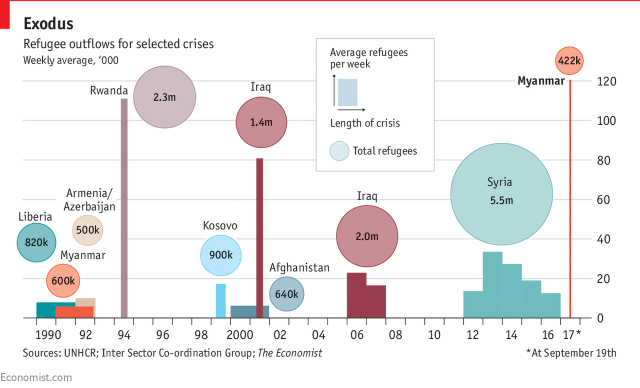In May of 2017, the Minister Catherine McKenna of Environment and Climate Change announced the federal government’s plans to for a national carbon tax. Each province must meet the floor for carbon pricing starting in 2018. By 2022, the national floor for carbon pricing will increase to $50/tonne.
There is strong evidence nationally and internationally that supports the effectiveness of carbon pricing to reduce GHG emissions (Bailey and Revell 2015; Vries, Masera, and Faas 2010; World Bank 2016).
By attaching a cost to emitting greenhouse gas emissions, it creates incentives for emitters to shift their behaviors and choices to reduce their GHG emissions. A price on carbon would lead to:
- Emissions of carbon declining because consumer reduce fuel consumptions when costs go up (e.g. drive less) or to substitute carbon-intensive goods for goods that have lower or no carbon content (e.g. substitute biking for driving)
- Producers becoming more efficient in adopting higher efficiency technology and cutting waste
- Revenues generated from carbon pricing policy could be used to fund environmentally beneficial projects and invest in research and development for green technology and low-carbon innovations
A well-designed carbon pricing poly is cost-effective because it allows emitters to find the most efficient methods to reduce emissions and cut cost. Consequently, this will stimulate the private sector to invest in renewable energy and green technology by creating a market for it and making it more competitive. The Way Forward also finds that carbon pricing effectively reduces GHG emissions without negatively affecting the economy.
The two main ways of putting a price on carbon that are currently used in Canada are a cap-and-trade system (such as in Quebec and Ontario), and a carbon tax system (such as in British Columbia and Alberta) (Vries, Masera, and Faas 2010). A cap-and-trade system creates a market for pollution whereas the Pigouvian tax approach internalizes the spillover effect of pollution. While there are distinct advantages and disadvantages of the two options, the cap-and-trade system and the taxing system are more similar than they are different (Goulder and Schein 2013):
- Both put a price on carbon, which can be adjusted over time
- Both create market incentives for emitters to identify and implement the most efficient methods to reduce emissions
- Both can generate revenue that can be recycled back to the economy (e.g. lowering other taxes, investing in research and development for green technology)
- Both can reduce emissions more cost-effectively than regulations
Where the two systems differ is that a cap-and-trade system guarantees a certain amount of emissions reduction, while a carbon tax guarantees a certain price for carbon (Goulder and Schein 2013).
However, increasing the relative prices of emissions-intensive goods and services might have a disproportionate effect on lower-income households and communities in northern or remote regions (e.g. the Indigenous communities) (Government of Canada 2016). More stringent carbon pricing policy can also add pressure to business sectors and industries that are particularly emission-intensive and export-dependent.
The economic costs of delaying or not taking actions are very high. Although it is difficult to estimate precisely what the cost of inaction, the National Round Table on the Environment and the Economy estimates the annual cost of inaction for Canada to be from $21-$43 billion by 2050 (Government of Canada 2016); and the Canada’s Ecofiscal Commission estimates the annual global damages to be $21 trillion by 2095 (Vries, Masera, and Faas 2010). Delaying action will result in higher future costs for Canadians.
References
Bailey, Ian, and Piers Revell. 2015. Government of Saskatchewan White Paper Climate Change. http://www.sciencedirect.com/science/article/pii/B9780080970868721015.
Beale, Elizabeth et al. 2015. Canada’s Ecofiscal Commission Provincial Carbon Pricing and Competitiveness Pressures: Guidelines for Business and Policymakers. https://ecofiscal.ca/wp-content/uploads/2015/11/Ecofiscal-Commission-Carbon-Pricing-Competitiveness-Report-November-2015.pdf.
Beugin, Dale et al. 2016. Canada’s Ecofiscal Commission Provincial Carbon Pricing and Household Fairness.
Canada, Environment and Climate Change. 2017. Technical Paper on the Federal Carbon Pricing Backstop. Quebec. https://www.canada.ca/en/services/environment/weather/climatechange/technical-paper-federal-carbon-pricing-backstop.html.
Goulder, Lawrence H., and Andrew Schein. 2013. “Carbon Taxes Vs. Cap and Trade: A Critical Review.” NBER Workshop Proceedings 1542(9): 33–36.
Government of Canada. 2016. Pan‑Canadian Framework on Clean Growth and Climate Change. https://www.canada.ca/content/dam/themes/environment/documents/weather1/20170113-1-en.pdf.
Ragan, Christopher et al. 2016. Choose Wisely – Options and Trade-Offs in Recycling Carbon Pricing Revenues. http://ecofiscal.ca/reports/choose-wisely-options-trade-offs-recycling-carbon-pricing-revenues/.
Vries, Laurens J De, Marcelo Masera, and Henryk Faas. 2010. Canada’s Ecofiscal Commission The Way Forward.
World Bank. 2016. 88284 Washington, DC: World Bank. State and Trends of Carbon Pricing.
 Last week, I had the privilege of attending the 2017 UN Peace Conference in Vancouver. This experience has left me with a lot to think about around youth, gender parity and peace.
Last week, I had the privilege of attending the 2017 UN Peace Conference in Vancouver. This experience has left me with a lot to think about around youth, gender parity and peace.




